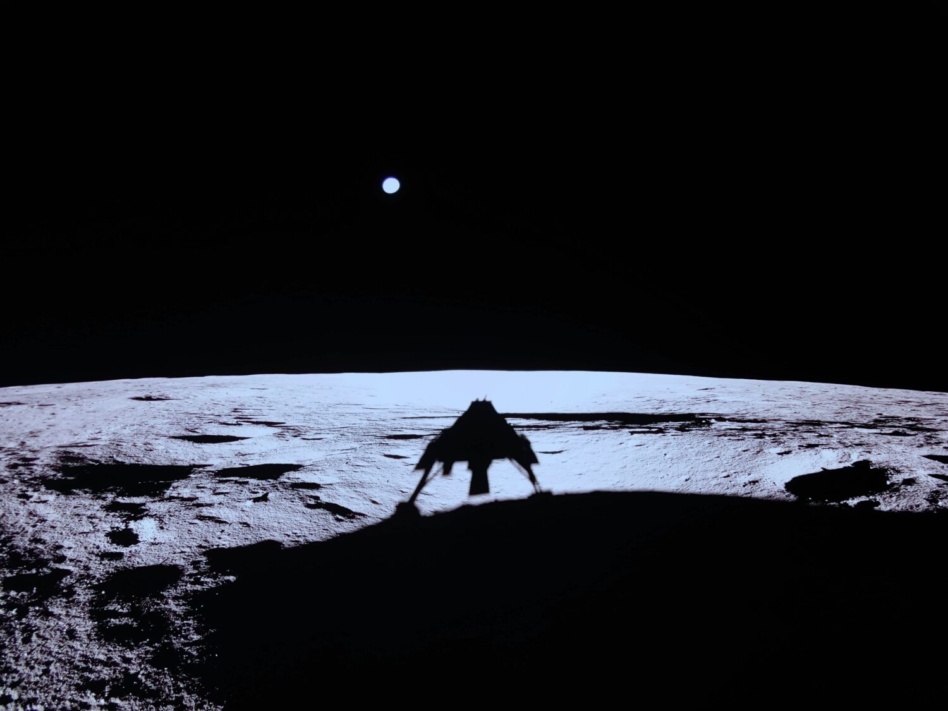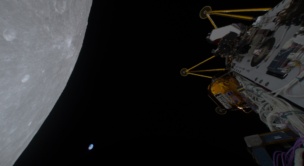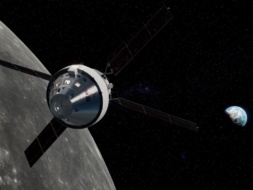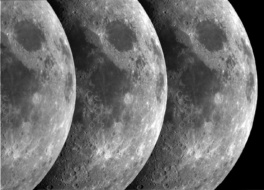When commercial lunar landers complete their mission, they turn off, providing a testament to humanity’s exploration frozen in time (and in the -400 degree Farenheit frigid lunar night).
It’s a poignant idea: A gaggle of retired landers standing watch as human engineering progresses, and a lunar economy erupts around them. However, a less romantic reading could paint the landers as no more than lunar litter.
With more and more planned lunar missions, concerns are growing that the Moon could turn into a permanent graveyard of human activity. Though it’s still early days for frequent commercial missions to the Moon, some experts say it’s never too early to start thinking about lunar sustainability. Concerns to address include protecting high-interest sites on the Moon, and ensuring access for the commercial and scientific sectors—by providing future generations a Moon filled with opportunities, and not filled with an off-world garbage dump.
“There needs to be more transparency on how the world is thinking about lunar sustainability,” said Charity Weeden, a former NASA policy chief whose views do not represent the agency. “It’s critical not to mess up, because you don’t necessarily get a second chance.”
Lunar sustainability 101: The first challenge facing “sustainability” on the Moon? The term means different things to different people. And while there’s a lot of conversation, there’s no consensus.
Afreen Siddiqi is part of a team at MIT that won funding from NASA last year to survey the space community on defining lunar sustainability. She said the people she’s interviewed are largely split into two camps:
- Those who view it as a mandate to create a sustainable long-term human presence on the Moon;
- Those who see it more about protecting the lunar environment to give scientists the opportunity to conduct research there.
Other experts who spoke with Payload talked about everything from lunar garbage, to vanity payloads, to risks of lunar dust plumes, to open access,as part of the conversation about sustainability. And it’s not just the surface. Concerns about sustainability extend to lunar orbit, and even invisible resources like spectrum.
Guidelines: Siddiqi is also working on developing a set of metrics for lunar missions, to evaluate sustainability.
“The question is thinking through the physical impacts that a mission creates,” she said. “If you can include these kinds of assessments upfront, you can create better ways of engaging with the Moon rather than not thinking about them at all—and discovering effects we wish we hadn’t created retroactively.”
Though the study is set to wrap up in a couple months, Siddiqi gave us a preview of the team’s findings, including an initial set of potential guidelines for Moon missions to help inform decision-makers. These include:
- The impact on Earth’s atmosphere due to an increased cadence of launches to the Moon;
- How much regolith will be disturbed by the mission’s operations;
- How the plume effect could affect assets in lunar orbit.
“There’s always a trade-off. In trying to improve one metric, you may have more cost,” she said. “If you go with the cheapest option, but it’s the worst for the environment, is it really the best option? We want to create a set of tools to grapple with those options.”
NASA did not respond to a request for comment on whether a new set of lunar sustainability funds will be awarded this year.
Zoom out: The study award isn’t the only NASA initiative focused on lunar sustainability. Other efforts include:
- The LunaRecycle Challenge, announced in September, which offers $3M in prize money for new tech to recycle waste.
- A white paper from last year that’s part of the Moon to Mars architecture on responsible exploration.
- Former NASA deputy Pam Melroy teased, during the Biden administration, that the agency was working on a second volume of its sustainability strategy that would focus on cislunar space. NASA did not respond to a comment on whether this was still in progress.
Push and pull: Scientists and companies are often interested in the same real estate on the Moon—and often, the ice that’s been frozen there for 4B years.
“The sustainable way would be to have an orderly process, where scientists come in [and] sample materials to get this snapshot. Then if people wanted to exploit that water ice for human activity and fuel, they could do that next,” said Richard Green, an astronomer emeritus at the University of Arizona.
The challenge for the space community faces is balancing two needs: protecting the potential for future scientific discoveries and not overburdening the still-young commercial industry with too much regulation too soon.
“People are trying to break it up into bite-sized pieces that don’t overburden industry,” Weeden, the former NASA policy chief, said. “No one is telling CLPS landers not to create a dust storm, but we need to understand what that is.”
More players: It’s not just industry and scientists duking it out. Others are seeking to protect historical sites—for example, the Apollo 11 lunar landing zone—or potential “national park”-like sites of natural and environmental interest. And in some cases, it could be industry versus industry. For example, what if a company were to leave its equipment behind, creating a barrier to a high-value lunar route? Or what if someone set up a large structure or solar array, blocking the sun for a commercial neighbor?
Green also stressed that exploring the Moon means more than just sharing the surface, as a form of entities doing parallel work on different projects. He highlighted a few areas where scientists and industry will instead need to figure out how to work together.
- Protecting the radio quiet on the far side of the Moon, to study frequencies from the early days of the universe;
- Using the seismic inactivity on the Moon as a vantage point to study gravitational waves;
- Relying on the Moon’s lack of atmosphere and extreme cold to use the Moon as the home for a super high resolution space telescope
“We’d lose an arm wrestle,” Green said of how scientists would fare in a dispute between industry and scientists. “The way you do it [instead] is you sit down with industry and not assume they’re your enemy. State your problem, and try to find cost-effective solutions that work for everybody…So far it has not been adversarial.”
Mediation, please: Experts say the United Nations should be the deciding body on how to share the lunar surface—but that the US should also play a leadership role in shaping how different sectors and nations sustainably work together on the Moon.
The UN Committee on the Peaceful Uses of Outer Space (COPUOS) established an Action Team on Lunar Activities Consultation last year to play a role in these discussions. Its main objectives this year, according to a draft report last month, are to agree on top priorities and a multi-year plan to address these priorities., Plans to draft these recommendations are expected in 2026, and should be finalized in 2027.
“It seems its [the action team’s] primary mission is to be an information dock, or where we go to be transparent,” said Michelle Hanlon, the founder of For All Moonkind, a nonprofit dedicated to protecting heritage sites on the Moon. “It’s not, ‘Don’t do that.’ It’s, ‘Let’s just make sure everyone knows where everyone else is,’…We have no idea how to handle a conflict.”
Hanlon also floated another opportunity for international collaboration: establishing technical standards for lunar spacecraft. For example, that would open the door for rovers to scavenge other spacecraft who reached the end of their mission for usable parts, rather than abandoning the entire mission as trash.




